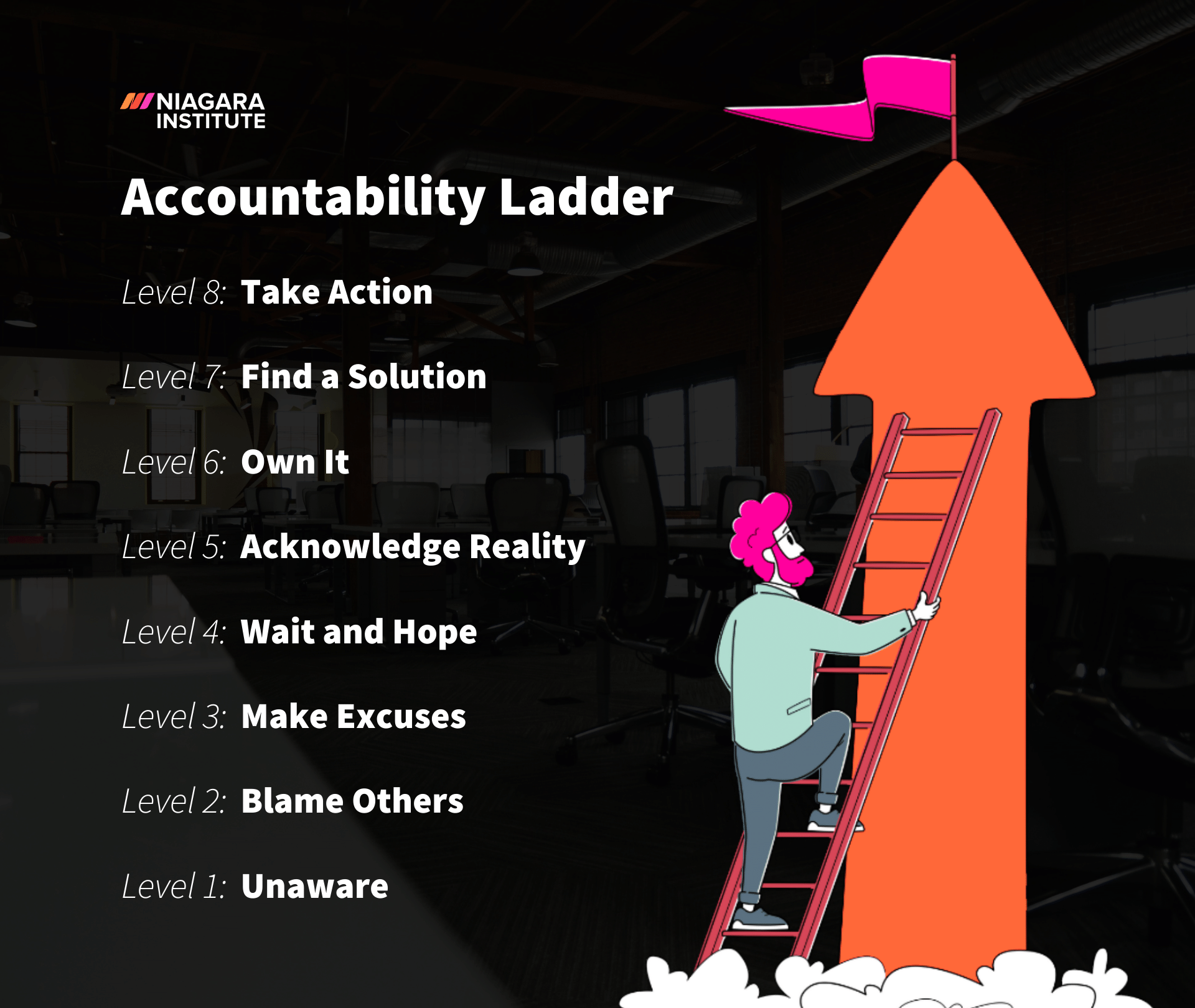4 min read
12 Accountability Quotes Every Leader Needs to Hear
Accountability is when you accept responsibility for the consequences of your actions, words, and decisions. As a leader, not only must you exemplify...
3 min read
 Michelle Bennett
:
Dec 1, 2022 5:00:00 AM
Michelle Bennett
:
Dec 1, 2022 5:00:00 AM

Every leader wants employees to take responsibility for their words, actions, and results - whether good or bad - yet 25% report that they feel this level of accountability is absent on their team.
If you feel the same and could use extra support holding your employees accountable, then you need to know about the accountability ladder. In this article, we’ll review what it is exactly and how you can use it in your day-to-day life as a leader.
The accountability ladder is a tool that helps leaders and employees identify one’s level of accountability, from 1 (the least accountable) to 8 (the most accountable). It was widely made popular back in 2007 by Bruce Gordon, the then-president of the NAACP, an American civil rights organization.
He explained that people on levels 1-4 of the accountability ladder typically believe things happen to them and behave as the victim, whereas those on levels 5-8 believe things happen because of them, and they behave in ways that are proactive and truly accountable. The exact levels on the accountability ladder are as follows:

This person isn’t even aware of the situation or that a problem may exist. They say things like, “I didn’t know” or “No one ever told me.”
This person might be aware of the situation or problem, but they aren’t willing to take responsibility for their part in it. Instead, they choose to blame others by saying something like, “You weren’t clear.”
Again, this person is aware but unwilling to take full responsibility for their part in a situation or problem and make excuses as to why. They will say something like, “I can’t because…” or “Well, that’s the way we’ve always done it.”
This person is aware of a situation/problem but decides to take the passive wait-and-see approach. They either hope it will go away, resolve itself, or go unnoticed by their teammates or leaders.
This person knows of the situation/problem and acknowledges that something needs to be done about it. They might say something along the lines of, “I should have done it.”
This person doesn’t just know about the situation/problem; they’re willing to own their part in it and explore what to do about it. Owning it may sound something like, “I won’t make that mistake again.”
This person acknowledges the situation/problem, takes responsibility for their part, and actively commits to finding a solution. For example, they would say something like, “Here’s what I’m going to do about it…”
This person is truly accountable. They acknowledge the problem/situation, own their part, find a solution, and then say, “I’m on it,” and put that solution into action.
Accountability can be one of those skills that feel elusive and hard to grasp for some. In which case, the accountability ladder can help solve that. Not only does it give something for you to reference during conversations about accountability, but it also gives your employees something tangible to visualize what it means to be truly accountable.
In fact, we recommend saving or printing out a copy to have on hand for easy reference in situations where you need to hold employees accountable.
For example, begin using the accountability ladder during your weekly one-on-one meetings. When you’re discussing progress, deadlines, and feedback, watch if your employees are demonstrating victim or accountable behaviors. Where would you put them on the accountability ladder? If you find that they aren’t where you want them to be, then bring their attention to the accountability ladder, point out where they are currently and why, and then identify where you want them to be, so they know what they need to be working towards.
Getting your employees to take responsibility for their actions and truly become accountable isn’t always easy, but having practical tools, like the accountability ladder, can help. What can also help is investing in a leadership training program or one-on-one coaching package that hones your leadership skills and provides you with additional insights, tricks, and tools related to holding employees accountable.

4 min read
Accountability is when you accept responsibility for the consequences of your actions, words, and decisions. As a leader, not only must you exemplify...

5 min read
Leaders in all departments and industries want their teams to be highly accountable - and for a good reason! When your team follows through on...

2 min read
Personal accountability is a highly desirable soft skill in today's workplace. It means answering for your actions, decisions, and commitments, which...